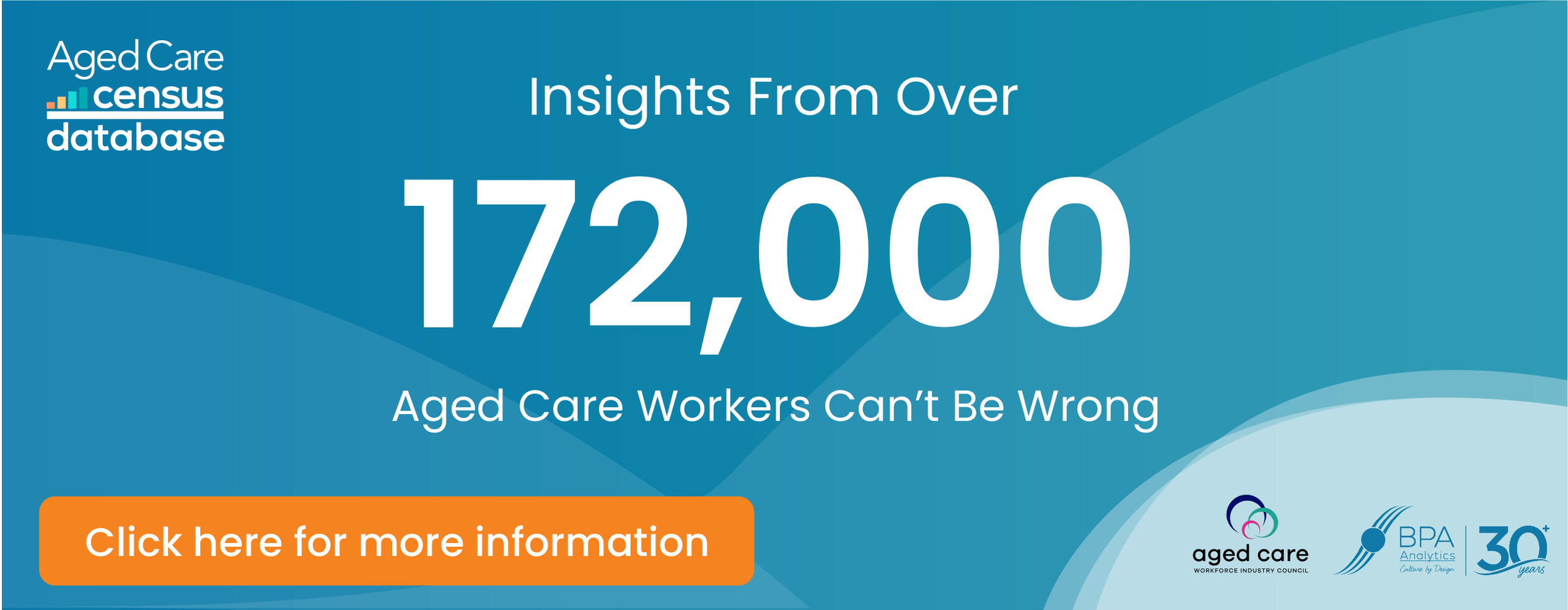Tactics to Manage Turnover in Aged Care
/The BPA Retention Map forms the backbone of a series of evidence-based tactics that Aged Care organisations can use to bring Employee Turnover and Retention back under control.
There are 4 tactics described below. They can apply to any sector and to any type of organisation. But, in this post, we are applying them to the Aged Care sector.
The “Aged Care: Covid Times” Retention Map above is one of a set of 33 you can access by viewing BPA’s Aged Care Retention Map Case Studies post.
Tactic 1: Set up a metric for your employees’ future intentions to stay or to leave.
Monitoring Turnover Rates and doing Exit Interviews/Surveys are useful but they are like looking in the rear-view mirror – you only see where you’ve been, you don’t see where you’re going. Monitoring Future Intentions is forward-facing. It gives you the chance to be pro-active.
The industry-level Future Intentions for Aged Care organisations during Covid Times (n=36,354) are:
57% want to stay (The Retention Zone)
19% want to leave (The Turnover Zone)
24% haven’t made up their mind (The At Risk Zone)This is surprisingly similar to the 10-year industry-level metrics for Aged Care at 56% : 18% : 26% (n=125,332).
If these figures applied to you at an organisational level, then during a year, you will lose most of the 19% Turnover Zone and a portion of the 24% At Risk Zone.
The size of just how much you lose from the 24% At Risk Zone will depend on how well you do Tactics 2, 3, and 4 below.
Tactic 2: Let your employees tell you in their own words what will motivate them to stay or to leave.
Cynics will jump in straight away and say “It’s the pay, stupid!”
Of course pay in Aged Care is a big issue but that is mainly because it has become a non-existent attraction factor. In terms of your current workforce, there are still a lot of things you can do to prevent Pay becoming the overwhelming turnover trigger it has the potential to become.
The BPA Retention Map themes the answers to 12 narrative text questions (yes, employees in their own words) about what motivates them to come, to stay, or to leave.
There are 25 dominant motivators:
7 types of Tangible Benefits
6 types of Intangible Benefits
12 types of Work Enablers
When we prepare a BPA Retention Map at an organisational (or facility) level, this enables the organisation to:
Identify its top priorities for attention; and
Use the underlying verbatim text to fine-tune its initiatives and to target specific trouble-spots.
This is a forward-facing tactic that puts the organisation on the front foot in dealing with Retention and Turnover.
Tactic 3: Concentrate your attention on the demotivators that are affecting the At Risk Zone employees.
Retention Zone employees are largely focused on the Intangible Benefits, but the At Risk Zone employees are hugely focused on problems with the Work Enablers.
When you look at a BPA Retention Map, you can easily see the wave that rolls out of the Retention Zone and into the Work Enablers in the At Risk Zone.
Success in resolving Work Enabler problems will provide the mechanism for shifting employees from the Turnover Zone into the At Risk Zone, and from the At Risk Zone into the Retention Zone.
Failure to resolve Work Enabler problems will push At Risk employees into the Turnover Zone, and that’s where Pay becomes an ultra-potent trigger to leave.
Once you’ve made your choices about which Work Enablers you need to address, then you can use the verbatim text to target specific trouble-spots and problems.
Tactic 4: Keep Tactics 1 to 3 current, probably each year as part of your normal workforce planning processes.
This can easily be supplemented by Employee Lifecycle surveying (On-boarding, First 6 months and Exit) to give you constant feedback during the year.
The key here is to let employees tell you what’s on their mind in their own words. If it’s only metrics, then that will never be good enough to help you stay pro-active and forward-facing on Retention and Turnover.







